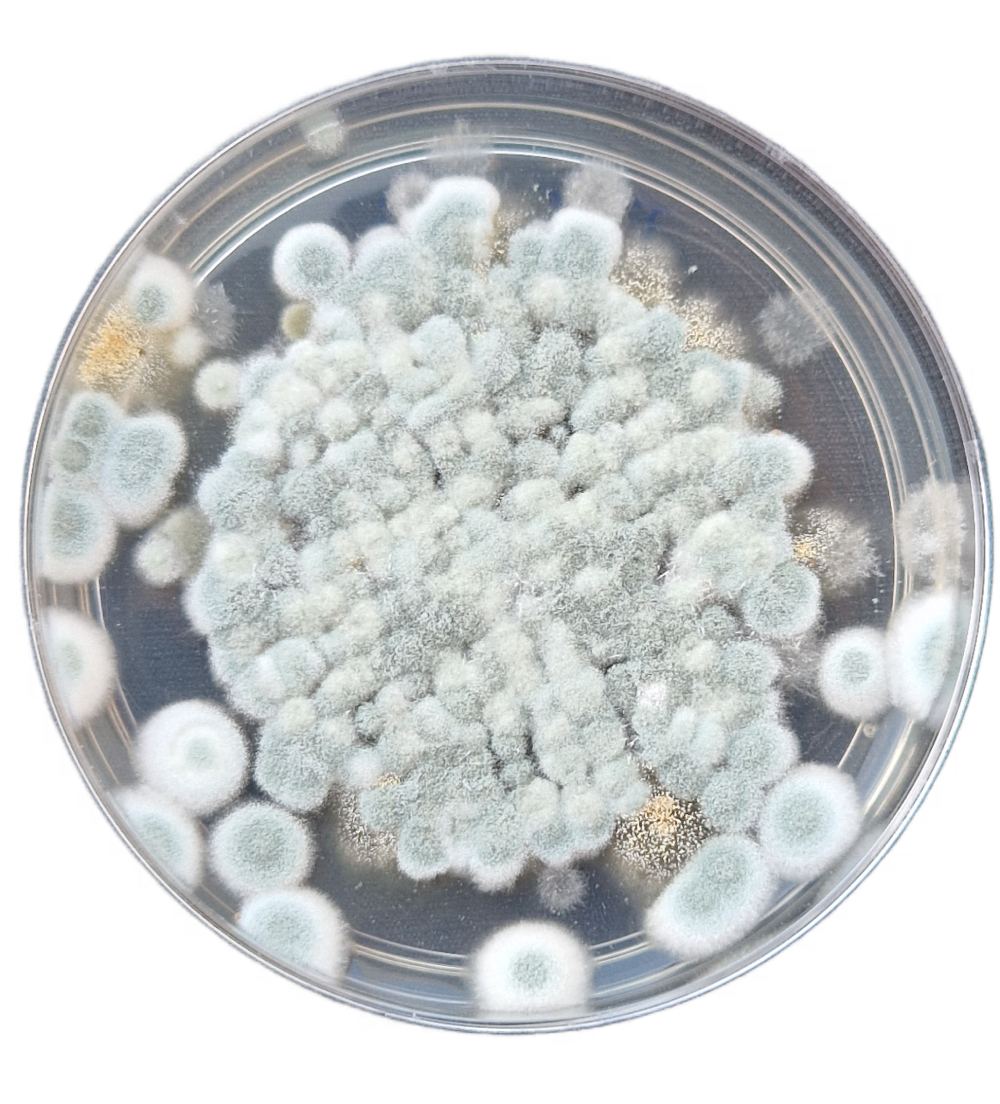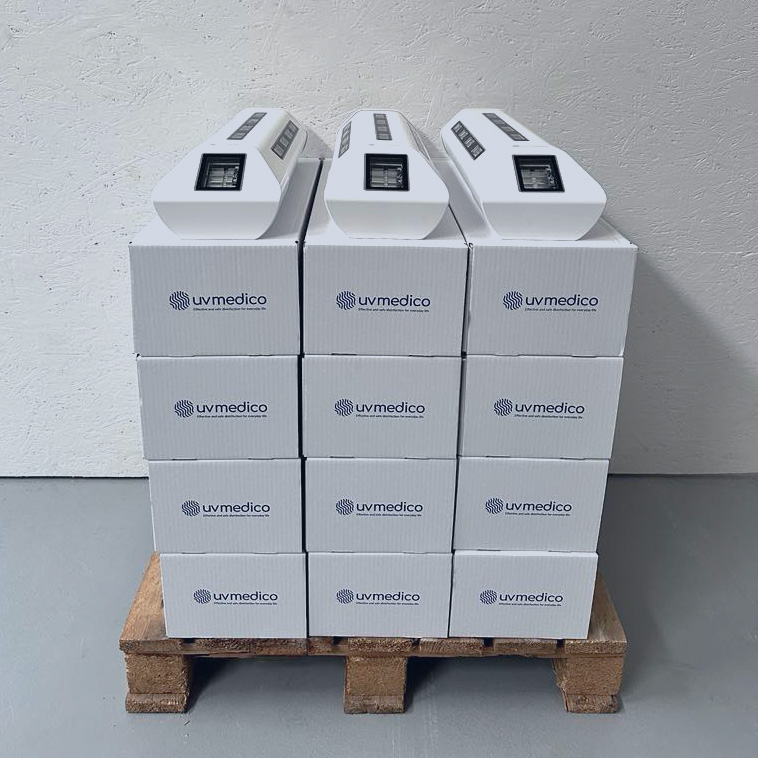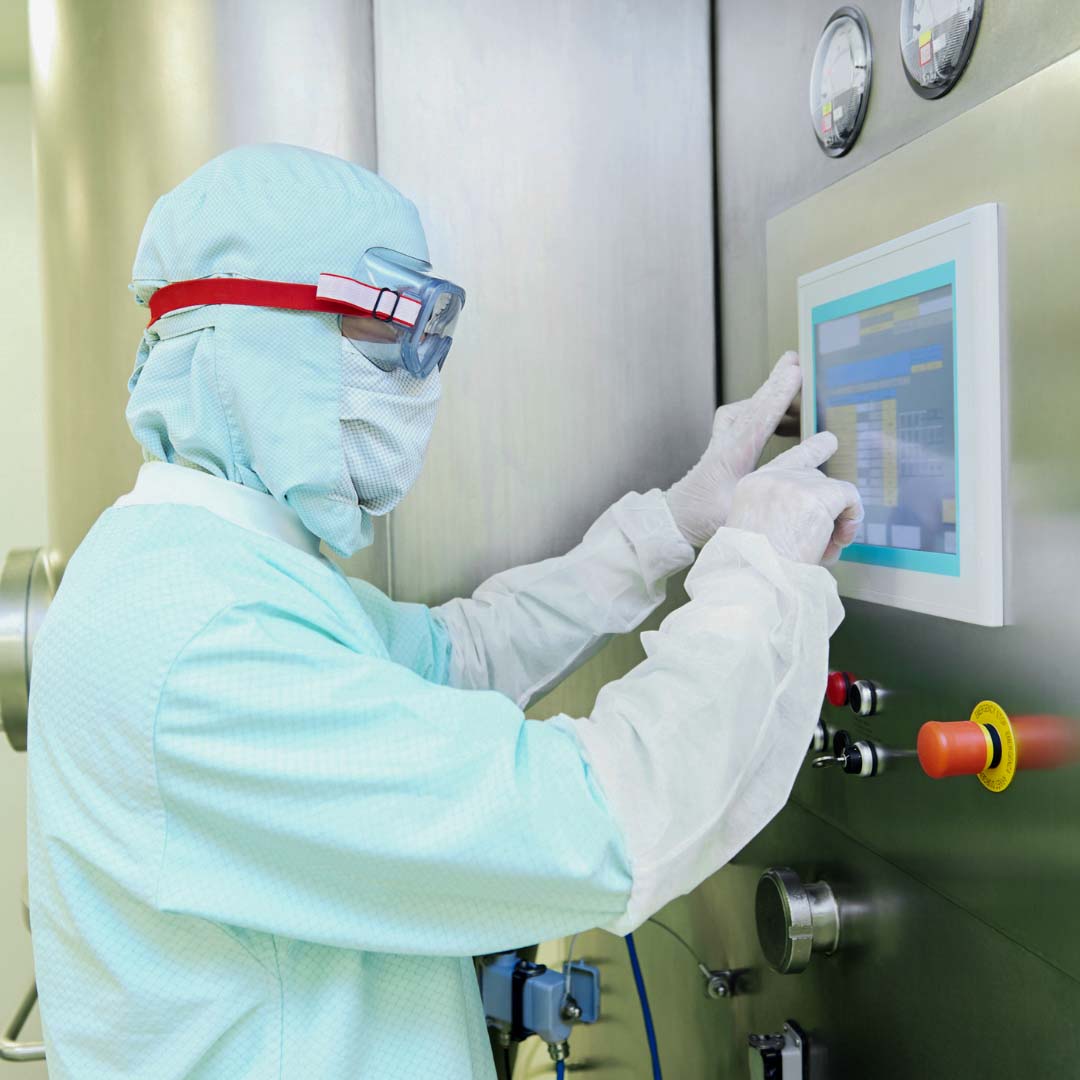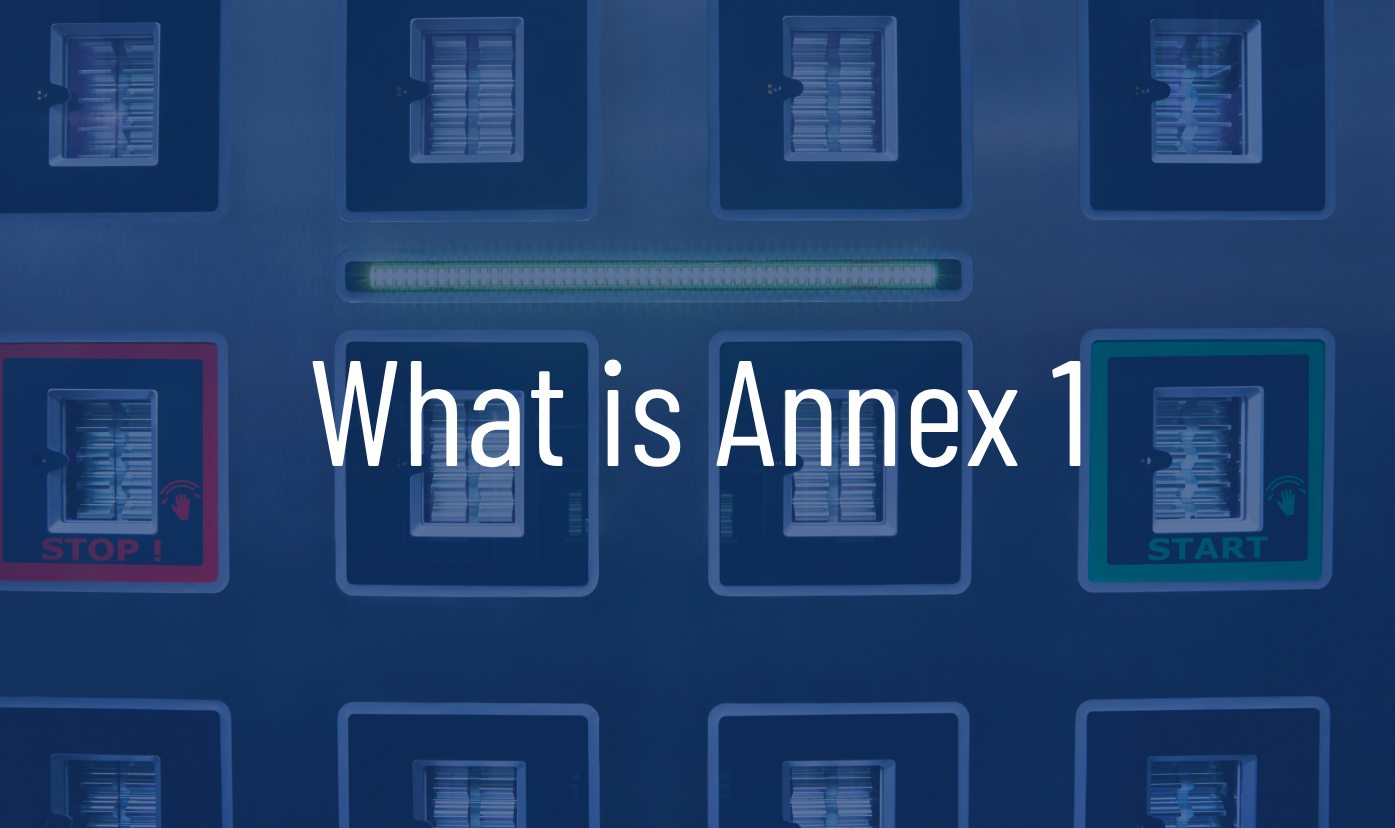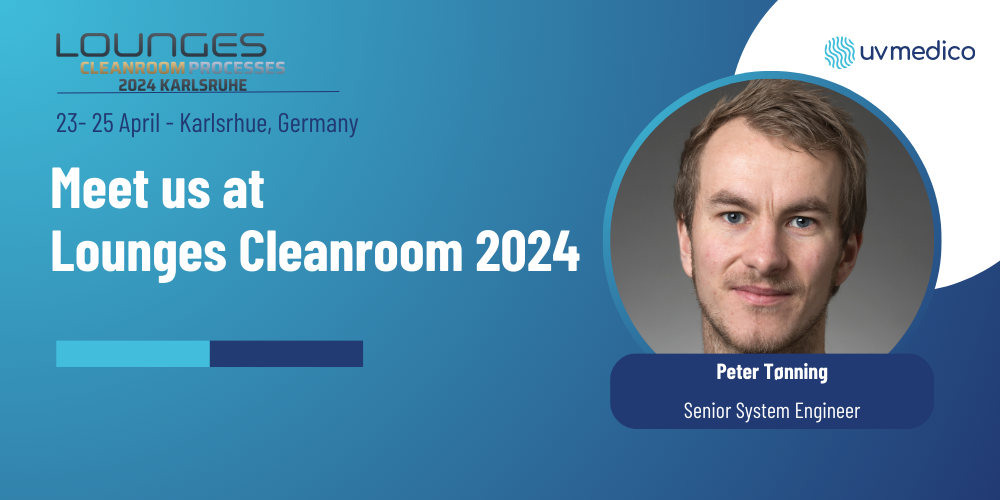3 min read
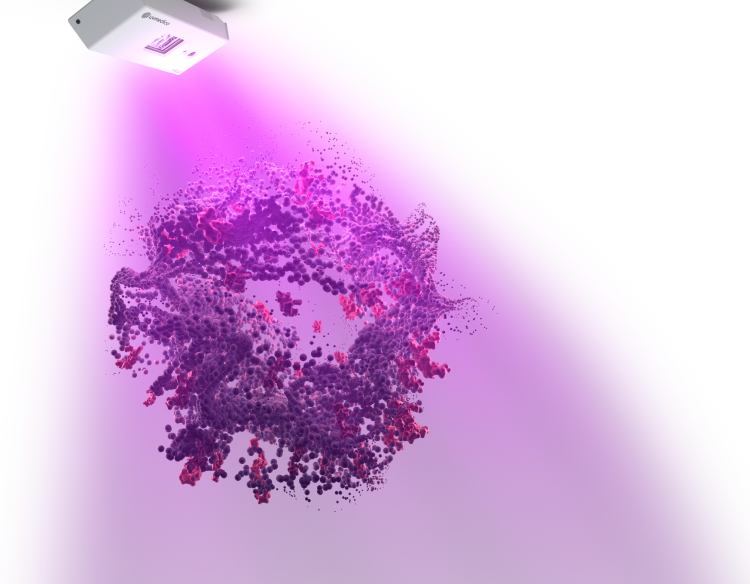
Far-UVC is a promising new technology with market potential in various sectors. With this article, we highlight how Far-UVC can play a vital role in making the healthcare sector both better and more sustainable.
The Far-UVC Technology
Far-UVC technology is a type of ultraviolet light technology that uses light in the lower end of the UV-C spectrum, around 222 nanometers (nm), to disinfect air and surfaces. This technology is gaining attention for its potential to inactivate pathogens, including viruses, bacteria, and fungi, in occupied spaces.
Listen to the audio version of this article
How Far-UVC Works
The high energy inherent to UV-C light makes it deadly to pathogens by destroying the protein shell and rupturing the DNA, thereby deactivating the microorganism, and hindering further replication. Conventional germicidal UV technologies have adverse side effects on humans and can potentially cause cataracts and skin cancer. With the new technology at lower wavelengths the penetration into biological tissue is very short ranged1. This makes the light at 222nm harmless to humans and other mammals since all light is absorbed in our outer layer of dead-tissue hindering any damage to living cells. As such, Far-UVC technology with emissions at 222nm provides a complete change in the way we can utilize UV light for whole room disinfection with people present in the room2.
Antibiotic Resistant Bacteria
Antimicrobial resistance (AMR) is a global public health concern. It occurs when bacteria, viruses, fungi, and parasites no longer respond to antimicrobial medicines, making infections difficult or impossible to treat. This resistance is a natural process that happens over time through genetic changes in pathogens. Still, its emergence and spread are accelerated by human activity, mainly the unsustainable misuse and overuse of antibiotics3.
The World Health Organization (WHO) estimates that bacterial AMR was directly responsible for 1.27 million global deaths and contributed to 4.95 million deaths in 20193. The World Bank estimates that AMR could result in 1 trillion US$ in additional healthcare costs by 2050 and between 1 to 3.4 trillion US$ in gross domestic product (GDP) losses per year by 20303.
Far-UVC technology is a promising weapon in the battle against multi-resistant microorganisms since the disinfectant mechanism is pure physics with no distinction to the biochemical composition of the microorganism. Similarly, there is currently no reason to believe that microorganisms can or will develop resistance toward UV disinfection solutions. In a study on the effect of UV-C light for disinfection in hospital settings, the incidences of hospital-acquired infections (HAIs) were reduced by nearly 20%, which resulted in a cost savings of more than $1.21 million over a 12-month period4.
Drawing parallels to the climate crisis, a new sustainable future for antibiotics should build on a combination of reducing consumption, optimizing efficiency, and finally applying new technologies, such as Far-UVC.
Energy consumption in hospitals
Healthcare facilities, including hospitals, are responsible for 10.3% of total energy consumption in the US commercial sector5. Energy usage per square meter is approximately 2.6 times higher than that of other commercial buildings5.
A significant contributing factor to hospitals' high energy demand is the strict indoor air quality regulations. The American Society of Heating, Refrigerating and Air-Conditioning Engineers (ASHRAE) recommends between 6 and 20 air-changes pr hour (ACH) in addition to their recommendations on temperature, humidity, and particle count6. Currently, hospitals spend approximately 15% of their energy on ventilation/air-filtration, which is projected to increase with the new requirements on ACH.
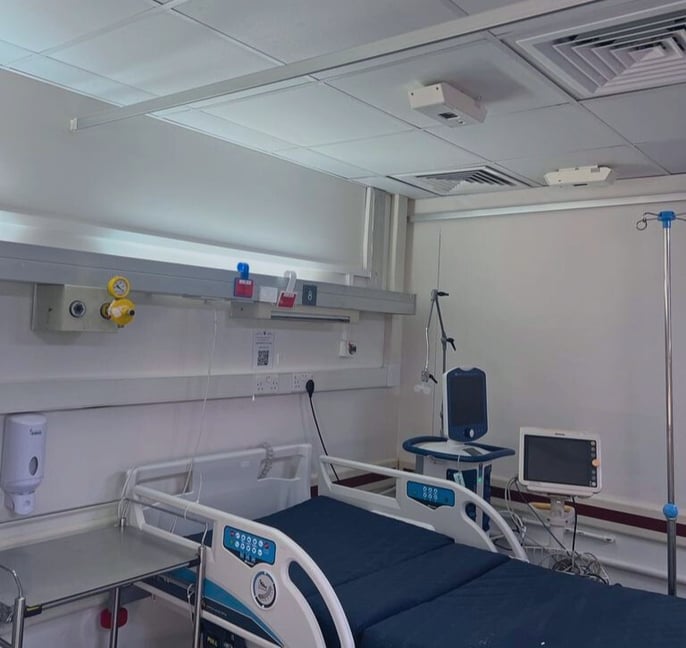
Far-UVC has been shown to be highly efficient in whole room disinfection. In a scientific study, Far-UVC lamps provided 184 equivalent air exchanges per hour (eACH)2. This surpasses any other approach to disinfecting indoor occupied spaces, at a low upfront investment cost and with low energy consumption in use.
In a recently updated industry standard7 ASHRAE acknowledges the potential of hybrid solutions for air purification directly includes equivalent air exchanges per hour as a performance metric for the air quality, and explicitly mentions UV-C disinfection as a cost-effective solution.
Lowering use of harmful chemicals
Far-UVC light is a physical method of disinfection, meaning it does not rely on chemical substances, thereby reducing the need for chemical disinfectants, which can be harmful to humans and the environment. Further Far-UVC light can be used continuously in occupied spaces once installed. This contrasts with chemical disinfectants, which typically require active application, dwell time, and sometimes active removal. Continuous disinfection can potentially reduce the overall amount of chemical disinfectants needed.
Chemical disinfectants can further have a negative environmental impact, including contributing to pollution of waterways. Thus, by reducing the use of harsh chemicals, Far-UVC technology can have a positive health-related and environmental impact.
Sustainable healthcare in 2024 and future directions
History has shown that global pandemics can bring a new normal and lessons learned from historic pandemics are a part of our arsenal going into future pandemics. The plaque ravaging Europe in the 14th century introduces the concept of quarantine. The tale of Typhoid Mary emphasizes the importance of germs and hand hygiene, and the Spanish flu in 1918 introduced facemasks.
Here in 2024, the picture seems to be that the COVID-19 pandemic guided us toward a real focus on indoor air quality. While new facilities are already built with ventilation, filtration, and Far-UVC whole-room disinfection, the bulk of our healthcare facilities need retrofitting of solutions that can bring the indoor air quality to 2024 standards. Doing so would bring down the use of antibiotics, make healthcare sustainable through efficient hybrid solutions for air-cleaning/disinfection, and strengthen our defense for the next epidemic.
-
References
[1] Buonanno, M. et. al. 2017; “Germicidal Efficacy and Mammalian Skin Safety of 222-nm” UV Light. Radiat Res; 187 (4): 493–501. https://doi.org/10.1667/RR0010CC.1
[2] Eadie, E., et al. 2022 “Far-UVC (222 nm) efficiently inactivates an airborne pathogen in a room-sized chamber.” Sci Rep 12, 4373. https://doi.org/10.1038/s41598-022-08462-z
[3] https://www.who.int/news-room/fact-sheets/detail/antimicrobial-resistance
[4] Raggi R, et. al. 2018. “Clinical, operational, and financial impact of an ultraviolet-C terminal disinfection intervention at a community hospital.” Am J Infect Control. Nov;46(11):1224-1229. https://doi.org/10.1016/j.ajic.2018.05.012
- the cost saving is for the single department that participated in the study[5] Khaled, B. et. al. 2019. "Energy Consumption Analysis and Characterization of Healthcare Facilities in the United States" Energies 12, no. 19: 3775. https://doi.org/10.3390/en12193775
[6] ASHRAE 170-2017
[7] ASHRAE 241-2023
Reach out to Peter Tønning at pto@uvmedico.com for further comments.
For Press enquiries write CMO Søren Rohde at sro@uvmedico.com.
Get the latest news from UV Medico
Latest articles from UV Medico
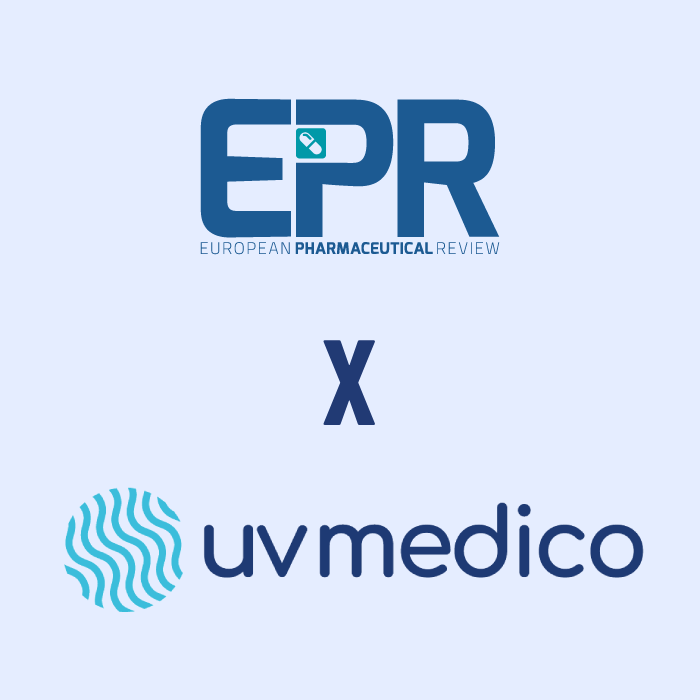
3 min read

 UV222™
UV222™ UV222 Linear
UV222 Linear UV222 Downlight
UV222 Downlight Vertex 222
Vertex 222.png) UV222 Pendant
UV222 Pendant.png) UV222 Booth
UV222 Booth.png) UV222 Step-On
UV222 Step-On.png) UV222 Cleanroom Downlight
UV222 Cleanroom Downlight.png) UV222 Pass-Through Box
UV222 Pass-Through Box.png) UV222 Material Airlock
UV222 Material Airlock UV222 Ambulance
UV222 Ambulance UV222 Vehicle
UV222 Vehicle UV222 Industrial
UV222 Industrial Peter Tønning
Peter Tønning
